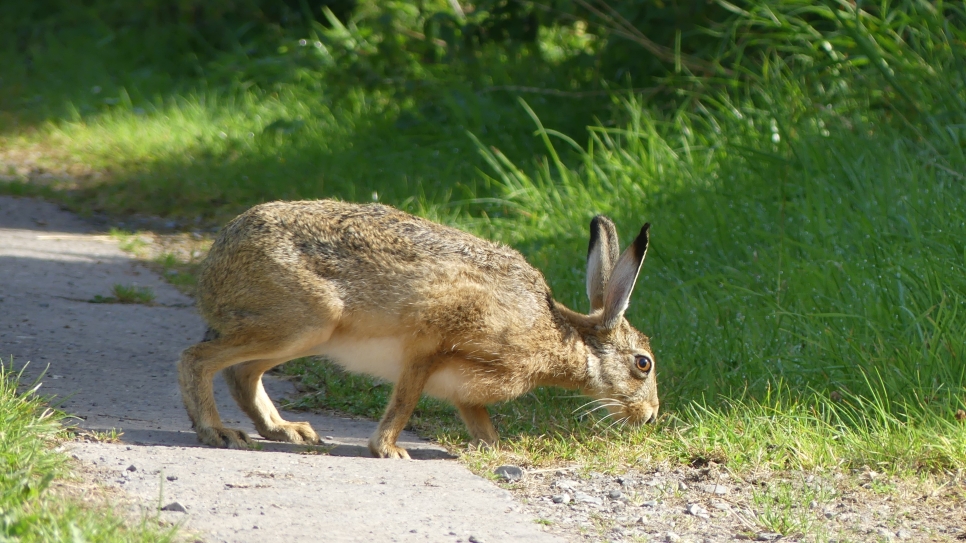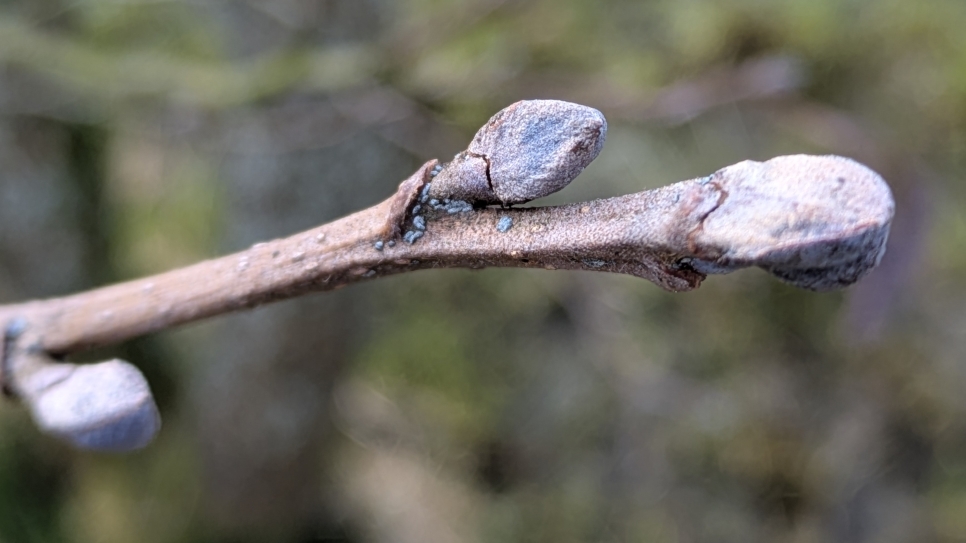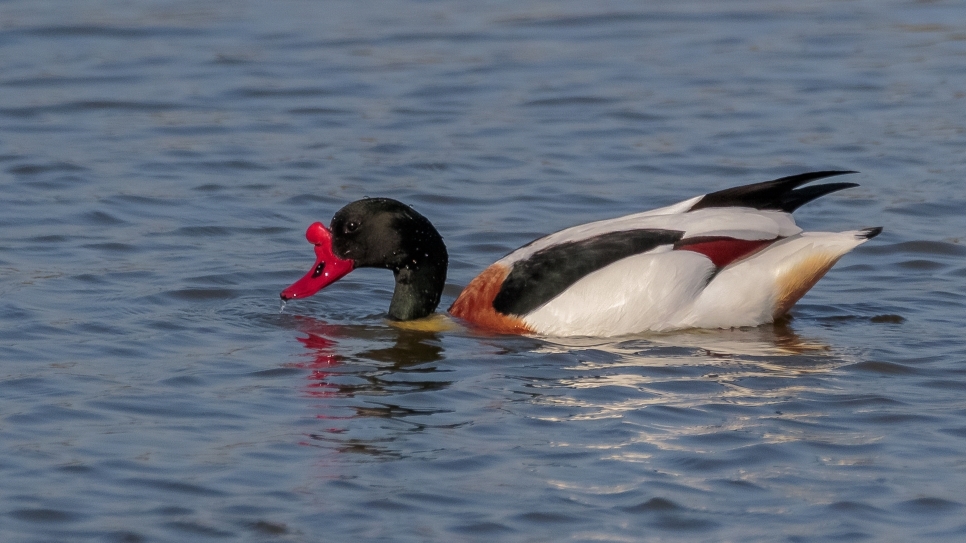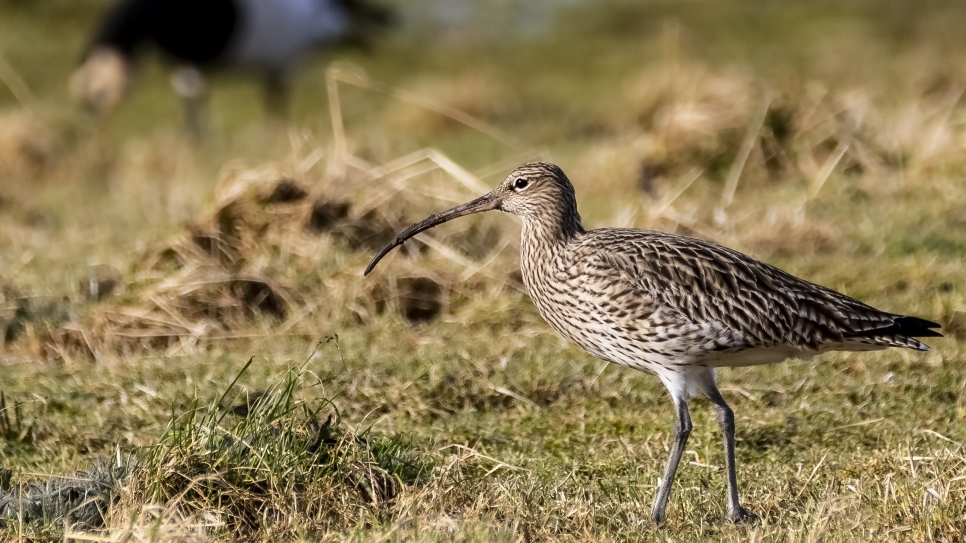Signs of spring
The reserve is starting to look and feel different with the signs of spring becoming more and more noticeable. The long belts of golden daffodils can still be seen but starting to be replaced with cheerful primroses, lesser celandines, and ramsons. The hedgerows are bursting with clusters of tiny white flowers from the spiny blackthorn, wood from this shrub has been used to make walking and riding sticks.
Our winter migrants may be on the move, but the staff has started to see and hear some of our summer migrants. The melodic rippling song of the willow warbler was heard from the willow thickets, this tiny bird feeds on insects and can be seen fluttering at the end of branches searching the undersides of leaves for aphids.
Our reserves and centre manager had one of his online meetings livened up with the presence of 120 redshanks on the Folly Pond. Other members of the reserve team while out on the merse doing a recce for the spring and summer surveys got several sightings of the highly camouflaged snipe, and were charmed with the rich song of the male skylark as they soared upwards, hovered effortlessly, and then parachuted back down to the ground.
Red kite sightings are increasing on the reserve, the four ruffs are still hanging around and can be seen from Avenue tower. Daytime whooper swan numbers may be declining but a pair of goosanders are now taking ownership of the Whooper Pond getting up close to the Peter Scott observatory. The two mute swan nests on the flood ground are growing daily, nest building can take up to two weeks, and staff is excited to see how many eggs will be laid.
We still have good numbers of shovelers on the Folly Pond, the barnacle geese are still around and have been taking a preference to the Folly field in the past few days. This week the sparrowhawk has been spotted over the paddock, Folly field, and along the Saltcot Loaning.
The swan feeds may have finished but the webcam is still on the Whooper Pond during the day and still swapping to the badger feeding station after 16:30 to catch those badger antics. Click on the link below.
https://www.wwt.org.uk/wetland-centres/caerlaveroc.
Tide Times:
Fri 08/04 17:38 7.3m
Sat 09/04 18:45 6.8m
Sun 10/04 07:29 & 20:20 6.8/6.6m
Mon 11/04 08:57 & 22:46 7.3/7.5m
Tue 12/04 10:12 7.3m
Wed 13/04 11:03 7.9m
Thu 14/04 11:43 8.5m
Fri 15/04 12:20 8.9m
Photo credit: Faith Hillier
Birds | Mammals | |||
Mute Swan | Hare | |||
Greylag geese | Roe Deer | |||
Canada Geese | Weasel | |||
Shelduck | Stoat | |||
Mallard | Fox | |||
Gadwall | Otter | |||
Shoveler | Badger | |||
Teal | Water vole | |||
Moorhen | Bank vole | |||
Cormorant | ||||
Little Egret | ||||
Grey Heron | ||||
Buzzard | ||||
Kestrel | ||||
Peregrine Falcon | ||||
Merlin | ||||
Sparrowhawk | ||||
Golden Plover | ||||
Oystercatcher | ||||
Lapwing | ||||
Common Sandpiper | ||||
Redshank | ||||
Black-tailed Godwit | ||||
Curlew | ||||
Snipe | ||||
Black-headed Gull | ||||
Common Gull | ||||
Herring Gull | ||||
Great Black Backed Gull | ||||
Wood Pigeon | ||||
Collared Dove | ||||
Great Spotted Woodpecker | ||||
Skylark | ||||
Yellowhammer | ||||
Redwing | ||||
Fieldfare | ||||
Meadow Pipit | ||||
Pied Wagtail | ||||
Dunnock | ||||
Chiffchaff | ||||
Song Thrush | ||||
Blackbird | ||||
Greenfinch | ||||
Goldfinch | ||||
Wren | ||||
Great Tit | ||||
Coal Tit | ||||
Blue Tit | ||||
Long-tailed Tit | ||||
Treecreeper | ||||
Jackdaw | ||||
Rook | ||||
Carrion Crow | ||||
Raven | ||||
Starling | ||||
House Sparrow | ||||
Tree Sparrow | ||||
Chaffinch | ||||
Linnet | ||||
Twite |



